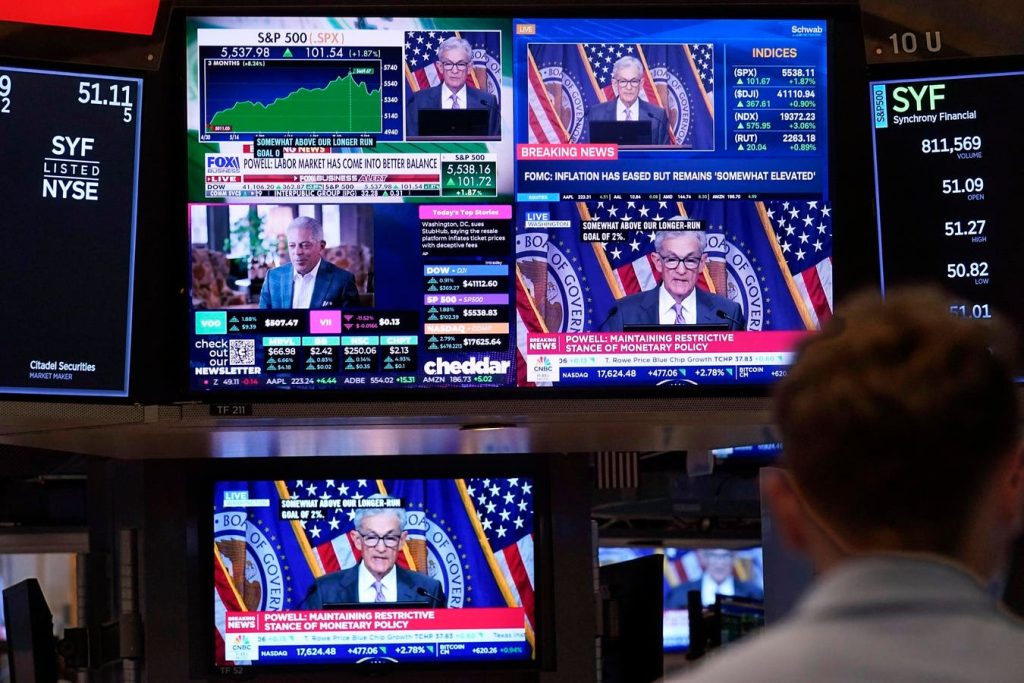Markets expect the Federal Open Market Committee to most likely cut interest rates by 0.25% to 5% to 5.25% on September 18. That’s according to the CME FedWatch Tool which tracks the implicit forecasts of fixed income markets.
Previously a larger rate cut was a strong possibility, but the chance of that has receded to around 10% currently after recent jobs and inflation data. Forecasting site Kalshi gives a 99% chance of a rate cut at the September meeting. FOMC policymakers have also clearly signaled that lower interest rates should be expected in the near future.
Recent Inflation Data
Headline Consumer Price Index inflation was reported at 2.5% for the 12 months to August. Core inflation, which removes food and energy price changes, is running slightly higher at a 3.2% annual rate. Personal Consumption Expenditure inflation, a metric is the FOMC typically prefers is running at a 2.5% annual rate to July 2024, and 2.6% excluding food and energy. Those figures will be updated for August on September 27.
To the extent inflation is running over 2% currently within the CPI that’s mainly due to shelter costs, this category is rising at a 5.2% annual rate as of August and carries a high weight within the CPI series because shelter is a large part of most household budgets.
Inflation is now much less of a concern than in recent years, but is still not at the FOMC’s 2% annual target. This is perhaps prompting a more measured approach to potential interest rate cuts. The FOMC want to eliminate the risk of inflation returning, even though that risk is generally considered to be declining and relatively close to target. If inflation were at 2% today, then the FOMC might be more aggressive in bringing rates lower, since the primary reason for hiking rates since 2021 was to fight elevated inflation.
Recent Jobs Data
On the other side of the FOMC’s dual mandate, August’s Employment Situation Report was somewhat reassuring, at least relative to some fears of weakening data.
Unemployment ticked down to 4.2% and non-farm payrolls grew 142,000. Nonetheless, unemployment has risen gradually for much of 2024, but August’s jobs offered a degree of reassurance that the jobs market is not deteriorating as fast as some forecasts feared it might.
If the jobs market were to weaken further or faster, then the FOMC may be prompted to cut rates more aggressively. That said, there are two sides to this analysis. On the one hand, unemployment is edging up gradually from very low levels. As such this return to a more normal unemployment rate may not be a concern. However, historically it hasn’t take much of a step-up in unemployment to trigger a recession. Indicators such as the Sahm Rule, which looks for a 0.5% rise in a normalized unemployment within a 12-month window to call a recession, suggest that we could be at risk of a recession from the absolute rise in unemployment in 2024 relative to 2023 already.
Nonetheless, with inflation not completely at the FOMC’s target and the jobs market cooling but suggesting a less severe decline so far, the FOMC may avoid larger interest rate cuts, at least for the September meeting.
Fed Meetings Beyond September
However, fixed income markets assess that a larger interest rate cut of perhaps 0.5% is quite possible when the FOMC meets in November or December. That could be because markets project further rises in unemployment.
There are three more Employment Situation Reports to come in 2024. These are on October 4, November 1 and December 6. If these show further deterioration in the jobs market, and especially if inflation moves even closer to 2% over the same period, then the FOMC may lean towards more aggressive rate cuts.
Read the full article here
